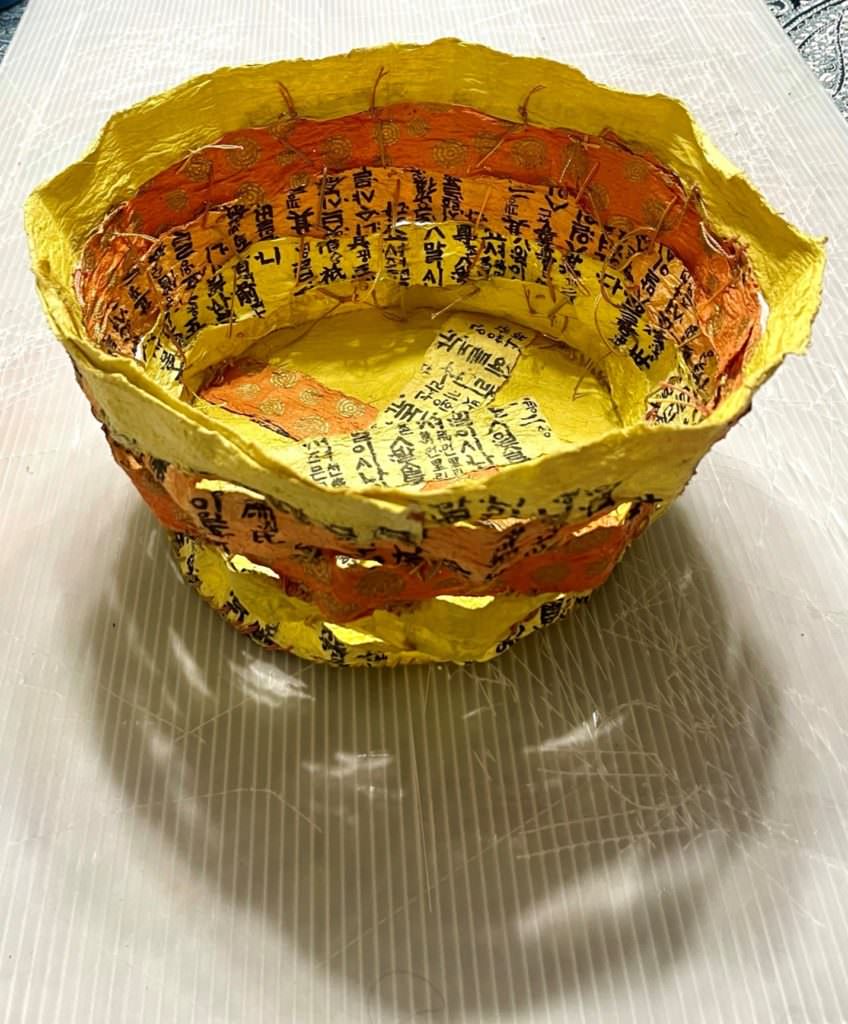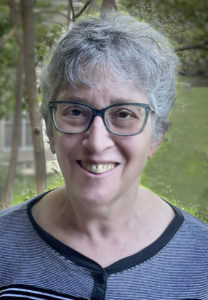
Prior to the pandemic, I’d been creating kaleidoscopic images from my photography. Using this design base, I began further discovery, taking a workshop in Joomchi, a 500-year-old Korean technique that assembles layers of mulberry paper, which are wetted, crushed, mashed, and smashed to create felted paper. The layers shrink, pigments bleed, and the paper becomes lacy and develops textures, holes, and striations. The work dries into surprisingly colorful, richly textured, and cloth-like pieces.

Since then, I’ve ordered additional mulberry varietals online, mostly from Paper Connection. I’ve worked with traditional Hanji but have found it fun experimenting with other papers.
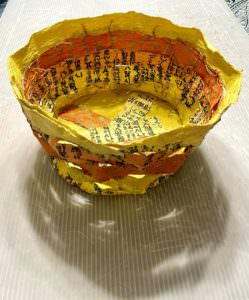
Jiyoung Chung, the artist who introduced Joomchi throughout the west, notes it is both an expressive and a meditative process. “It’s like life,” she says, “through hardships, we become stronger . . . in the process of breaking down and forming new bonds, the paper becomes stronger.”
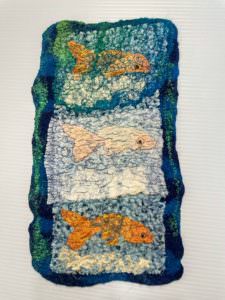
I’ve continued online classes, adding fiber arts, hand-stitching, and traditional felting – combining paper, wool, and silk. The journey has been both contemplative and soothing.
During the pandemic, Joomchi kept me sane and as life opens, I continue my journey, weaving tradition and my perspective.
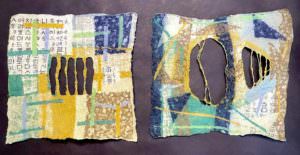
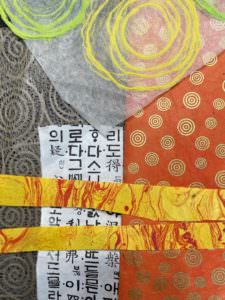
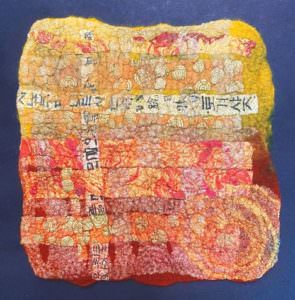
Julie Miller on PCI papers that tell your story
NOTE from PCI: The craft of “joomchi” is still very popular these days. These are our earlier blogs on this topic.

